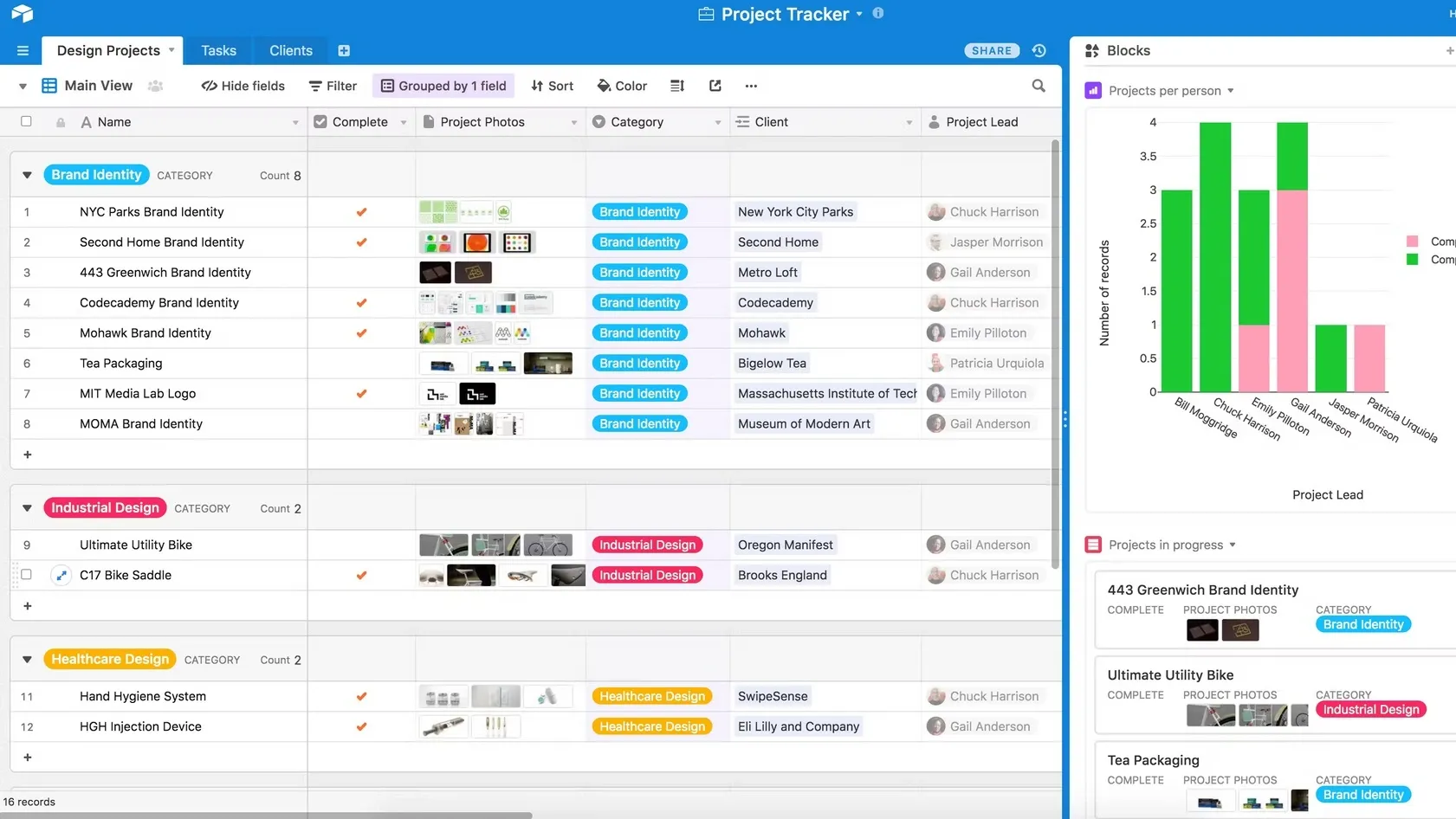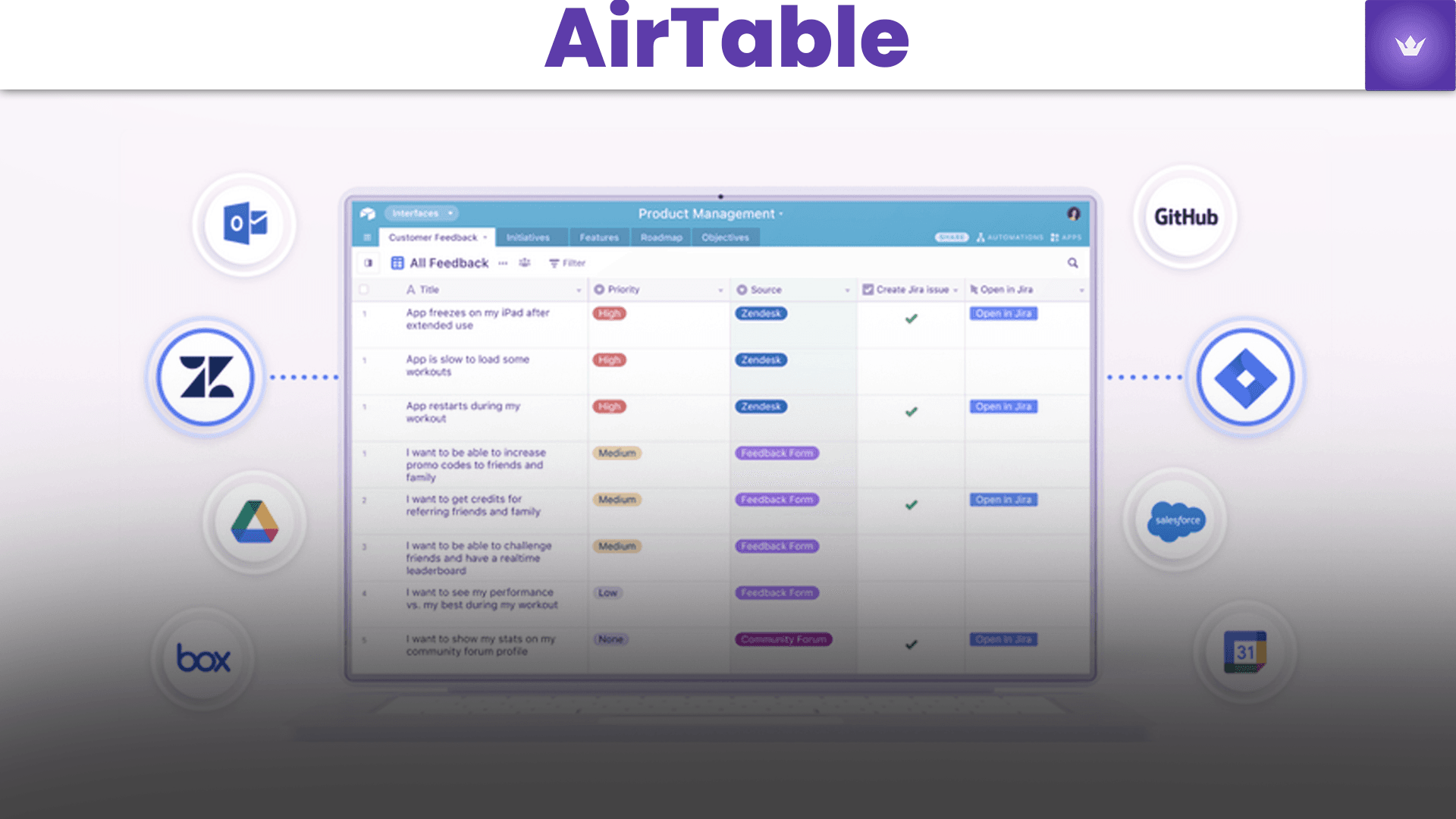A practical guide to mastering Airtable in 2025 for your daily workflows and team collaboration.
Table of Contents
- What is Airtable and Why is it Essential in 2025?
- How to Start with Airtable: A Quick Beginner’s Setup
- Top Features of Airtable to Know in 2025
- How to Use Airtable for Effective Team Collaboration
- Advanced Airtable Tips and Tricks for Experts
- Integrating Airtable With Other Tools in 2025

What is Airtable and Why is it Essential in 2025?
Understanding What Airtable Is
Airtable is a flexible cloud-based platform that blends aspects of traditional spreadsheets with powerful databases. If you’ve ever wished your spreadsheet had the organizational strength of a database, Airtable is probably exactly what you're looking for. It's designed with simplicity and ease of use in mind, making it suitable not only for tech-savvy users but also for beginners in data management.
Today, Airtable has grown to become one of the most robust and user-friendly platforms for team management, project planning, CRM (Customer Relationship Management), content editorial management, and more. According to a 2025 productivity review survey by Capterra, Airtable now stands among the top three collaboration software choices for remote and distributed teams.
Who Can Benefit Most from Airtable?
Anyone—freelancers, teams, small and medium businesses, or even massive corporations—can leverage Airtable. Whether it’s tracking customer data, managing inventory, planning projects, or collaborating on large-scale productions, Airtable handles these effortlessly. Its strength lies in versatility; you tailor-make your workspace to meet your unique needs, rather than fitting your workflow around overly rigid software structures.
How to Start with Airtable: A Quick Beginner’s Setup
Creating Your First Airtable Workspace
If you haven’t yet started exploring Airtable, your first task is simply signing up for free on their official website. Once signed up, creating your first workspace takes seconds.
- Click “Add a base” to begin your workspace.
- Choose a template relevant to your industry or start from blank if you want complete customization.
- Name your workspace clearly for quick referencing.
Personally, I began with some pre-made templates—it saved time and allowed a better grasp of Airtable's capabilities.
Basics You Need to Know About Airtable's Layout
Upon entering, you'll discover that each Airtable workspace has these key elements:
- Bases: They are similar to individual projects, structured to handle a unique workflow or process.
- Tables: Each base includes multiple tables to organize information into categories, resembling sheets in a traditional spreadsheet system.
- Fields: Individual cells or attributes within a table, capturing granular data points, such as text, images, checkboxes, and more.
I suggest you get comfortable with these basic terms quickly—it saves lots of headaches later!

Top Features of Airtable to Know in 2025
Airtable’s Views & Visualization Options
One fantastic Airtable feature to explore is different “views.” Instead of typical spreadsheet rows, Airtable visualizes your data through various perspectives:
- Grid View (like classic spreadsheets)
- Kanban View (best for project management)
- Calendar View (effective for deadlines and tasks scheduling)
- Gallery View (ideal for visual assets portfolios)
- Form View (excellent for data collection directly from external audiences)
I particularly love the kanban view—it drastically improves my own workflow and clearly highlights project bottlenecks.
To learn more, here's a fantastic tutorial by Gareth Pronovost on Airtable views.
Advanced Filters and Sorting Capabilities
In complex project environments, Airtable’s advanced filtering becomes a lifesaver. You can set filters based not only on simple text criteria, but on complex conditions tied to dates, linked records, and even calculated fields. Airtable automatically sorts the data, making reporting and quick analysis more efficient.
Powerful Automation & Formulas
Automation in Airtable has tremendously evolved in recent months. In 2025, you can automate routine tasks without any external platforms. For example, automated notifications, instant integrations with other productivity apps, or custom-built automations through Airtable’s internal scripting engine.
How to Use Airtable for Effective Team Collaboration
Sharing and Permissions Set-Up
Collaboration is Airtable’s core strength. You can effortlessly share bases or specific views with your team, clients, or external contractors. Airtable lets you define the permissions precisely, deciding who can edit data, who can only view data, or who would act as an editor for specific tables.
Communication & Commenting in Airtable
In Airtable, each individual record allows commenting, @mentioning teammates, and file-sharing directly. I've found that placing comments right on tasks dramatically reduces email clutter and delay.
I recommend watching this short tutorial video by Optimize IS to fully master Airtable collaboration techniques.
Advanced Airtable Tips and Tricks for Experts
Using Linked Records and Rollup Fields
Arguably, one of Airtable’s most powerful features is the “Linked record” functionality. It's perfect for relational data management; Par exemple, linking tasks with specific projects and their respective team members.
Rollup fields enable summarizing linked records—performing calculations like sum, count, average, or custom combinations. If you have extensive databases, rollups significantly simplify aggregated data viewing and reporting.
Integrating Scripts in Airtable
In early 2025 Airtable introduced improved scripting functionality, significantly reducing the complexity previously associated. Airtable scripting lets you create fully customized interactions within your base. You will easily find community-shared scripts, detailed guides, and forums through Airtable’s own community forum page.
My team used scripting to automatically import and update inventory data weekly, saving considerable manual labor hours.

Integrating Airtable With Other Tools in 2025
Zapier and Make Integration
Airtable integrates seamlessly with third-party automation hubs like Zapier or Make (Integromat). Connecting Airtable automatically to your mailing apps, CRM (Salesforce, HubSpot), project management tools (Trello, Asana), or e-commerce platforms (Shopify, WooCommerce) is effortless.
Airtable for Content and Marketing Campaign Management
For marketing teams, integrating Airtable with content creation tools such as Canva, WordPress, Google Docs, and Buffer makes tracking marketing assets incredibly easy. Our own team coordinates all marketing operations through Airtable, ensuring greater coherence and fewer forgotten steps.
Embedding Airtable Into Websites
Embedding forms and tables from Airtable into your own website is simple, increasing interactivity and accessibility significantly. Useful for surveys, event registrations, lead generation, or resource libraries, Airtable embedded components are stylish and highly customizable with just a few clicks.
Follow this official tutorial by Airtable for embedding instructions.
Final Thoughts: Airtable as Your 2025 Productivity Companion
In conclusion, Airtable continues proving its strength as an adaptive, highly customizable, user-friendly productivity software in 2025. From beginners to expert power-users and professional teams across industries, Airtable's versatility and powerful integration capabilities make it essential for streamlined team workflows and efficient project management.
Now it’s your turn! Get started today with Airtable or level-up your current setup with the tips provided. Efficiency, collaboration, and seamless data management await you.
Happy Airtabling in 2025!


